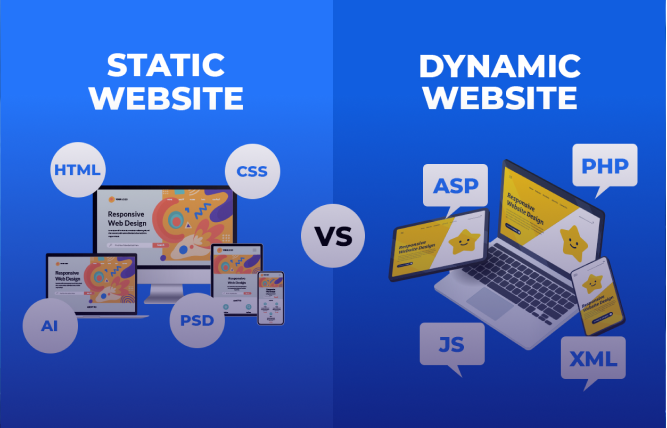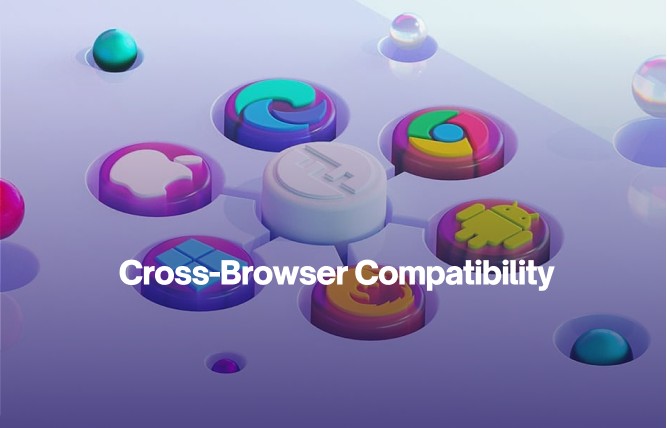Introduction
Headless web development has allowed businesses in various industries to improve their websites performance and communicate with customers in a better way. In this article we will discuss the benefits of moving towards headless web development and how industries are benefiting from it.
The web development space is growing at an exponential rate, and businesses are looking at improved ways to undergo their web development process. One of these ways is with the help of headless web development. Businesses worldwide have started implementing headless web development to improve performance.
Many businesses are implementing headless practices, with industry reports stating that the headless market is set to grow at 20% CAGR between 2022 to 2026. As of 2024, 40% of e-commerce businesses leveraging headless web development to deliver personalised digital experiences.
In this article we will discuss headless web development, its impact on businesses and how it differs from traditional web development practices.
Key Aspects of Headless Web Development
Headless web development is a modern approach that decouples the front-end presentation layer from the back-end content management system (CMS). This separation provides various advantages and introduces several key aspects that businesses should consider when implementing headless web development.
Decoupled Architecture
The core aspect of headless web development is its decoupled architecture. This means the front-end and back-end are independent of each other, allowing developers to choose the best tools and technologies for each layer. This flexibility results in more customised and optimised user experiences across different platforms.
Content Delivery API
A headless CMS typically uses APIs to deliver content to any front-end framework. These content delivery APIs (RESTful, GraphQL, etc.) facilitate the seamless exchange of data between the CMS and various presentation layers, enabling consistent content delivery across multiple channels such as web, mobile, and IoT devices.
Omnichannel Delivery
Headless web development supports omnichannel content delivery, ensuring that content can be easily repurposed and distributed across different platforms and devices. This aspect is crucial for businesses aiming to provide a unified user experience regardless of the channel through which users access their content.
Why Does A Business need Headless Web Development?
In today’s rapidly evolving digital landscape, businesses must stay agile and adaptable to meet the ever-changing demands of their customers. Headless web development offers a modern approach that addresses these needs effectively. Unlike traditional web development, headless architecture decouples the front-end presentation layer from the back-end content management system (CMS). This separation provides several advantages that can significantly benefit businesses.
Flexibility and Customisation
Headless web development allows businesses to deliver content across multiple channels, including websites, mobile apps, and IoT devices, without being tied to a specific front-end framework. This flexibility enables companies to create highly customised user experiences tailored to different platforms and audiences.
Improved Performance
By decoupling the front-end from the back-end, headless web development can lead to faster load times and better performance. Front-end developers can optimise the presentation layer independently, ensuring that users receive a seamless and responsive experience.
Scalability
Headless architecture is inherently scalable. As a business grows, its digital presence can expand without the limitations of a monolithic CMS. This scalability is crucial for businesses looking to extend their reach and handle increased traffic without compromising performance.
Enhanced Security
With headless web development, the front-end and back-end are separated, reducing the attack surface for potential security threats. This separation can help protect sensitive data and improve overall security by isolating vulnerabilities.
Faster Time to Market
Headless CMS solutions enable faster development cycles. Front-end and back-end teams can work simultaneously, streamlining the development process and reducing time to market. This agility is essential for businesses that need to quickly adapt to market changes and launch new features or products.
Future-Proofing
Technology is constantly evolving, and businesses must adapt to stay relevant. Headless web development provides a future-proof solution by allowing easy integration with emerging technologies and frameworks. This adaptability ensures that businesses can keep pace with innovation without undergoing extensive overhauls.
Cost Efficiency
While the initial setup of a headless CMS may require investment, the long-term benefits often outweigh the costs. The ability to reuse and repurpose content across different platforms can lead to significant savings in development and maintenance expenses.
Improved Developer Experience
Developers benefit from the freedom to choose their preferred tools and frameworks for front-end development. This autonomy can lead to higher productivity, more innovative solutions, and better overall outcomes for the business.
Seamless Integrations
Headless web development facilitates seamless integrations with other systems and services, such as CRM, e-commerce platforms, and analytics tools. These integrations enable businesses to create a more cohesive and efficient digital ecosystem.
Evolution from Traditional Web Development to Headless Web Development
Web development has undergone significant transformations over the years, adapting to changing technologies, user expectations, and business needs. Traditional web development and headless web development represent two distinct approaches, each with its own set of advantages and challenges.
Here is a table that discusses the difference between the two types of web development:
| Aspect | Traditional Web Development | Headless Web Development |
| Architecture | Monolithic (tightly coupled front-end and back-end) | Decoupled (independent front-end and back-end) |
| Content Delivery | Single-channel (web) | Omnichannel (web, mobile, IoT, etc.) |
| Flexibility | Limited to the capabilities of the CMS | Highly flexible, using any front-end framework or technology |
| Customisation | Customisation often restricted by CMS limitations | Extensive customisation possibilities for user experiences |
| Performance | Performance can be affected by the complexity of the monolithic system | Optimised performance due to separation of concerns |
| Scalability | Scaling requires managing the entire monolithic system | Independent scaling of front-end and back-end components |
| Development Speed | Slower development due to interdependencies | Faster development with parallel front-end and back-end workflows |
| Security | Unified system may have a larger attack surface | Enhanced security with isolated layers |
| Maintenance | Maintenance can be complex and time-consuming | Simplified maintenance with independent updates and improvements |
| Future-Proofing | Adapting to new technologies can be challenging | Easier integration with new and emerging technologies |
| Developer Experience | Developers often constrained by CMS capabilities | Improved experience with freedom to choose preferred tools and frameworks |
Industries That Can Benefit Most from Headless Web Development
Headless web development offers significant advantages across various industries by providing flexibility, scalability, and the ability to deliver content seamlessly across multiple channels. Here are some industries that can benefit the most from adopting headless web development:
E-Commerce
E-commerce businesses often need to provide a seamless shopping experience across various platforms, including websites, mobile apps, and even IoT devices. Headless web development allows these businesses to manage their product catalog, user data, and content centrally while delivering personalised shopping experiences on any device. This flexibility helps e-commerce companies improve user engagement, increase conversion rates, and stay competitive in a rapidly evolving market.
Media and Entertainment
Media and entertainment companies must deliver rich content to a diverse audience through multiple channels, such as websites, mobile apps, smart TVs, and streaming platforms. Headless web development enables these companies to manage their content centrally and distribute it efficiently across different platforms. This approach ensures consistent user experiences, faster content updates, and the ability to integrate new technologies without overhauling the entire system.
Financial Services
Financial services providers, including banks and insurance companies, require robust and secure systems to deliver real-time information and services to their clients. Headless web development offers enhanced security and flexibility, allowing these institutions to build user-friendly applications that can be accessed on various devices. By adopting headless architecture, financial services can improve customer experience, streamline operations, and quickly adapt to regulatory changes.
Healthcare
The healthcare industry benefits from headless web development by providing secure and scalable solutions for managing patient information, scheduling appointments, and delivering telemedicine services. With a headless approach, healthcare providers can ensure compliance with strict data privacy regulations while offering seamless access to their services across multiple platforms. This improves patient engagement, enhances service delivery, and allows for the integration of innovative technologies such as AI and IoT.
Education
Educational institutions and e-learning platforms need to deliver a wide range of content, including lectures, assignments, and interactive materials, to students on various devices. Headless web development allows these institutions to create and manage content centrally while delivering it through multiple channels. This approach supports personalised learning experiences, scalability, and the ability to incorporate new educational technologies seamlessly.
Retail
Retail businesses can leverage headless web development to create immersive and personalised shopping experiences for their customers. By decoupling the front-end and back-end, retailers can quickly implement changes to their user interface, integrate new payment gateways, and provide real-time inventory updates. This flexibility helps retailers stay agile, meet customer expectations, and respond to market trends effectively.
Travel and Hospitality
The travel and hospitality industry can benefit from headless web development by offering consistent and engaging experiences across websites, mobile apps, and kiosks. Headless architecture allows these businesses to manage bookings, customer information, and promotional content centrally while delivering it seamlessly to various touchpoints. This enhances customer satisfaction, streamlines operations, and supports the integration of emerging technologies such as AI-driven recommendations and virtual tours.
Real Estate
Real estate companies need to manage and showcase property listings, client information, and market data across multiple platforms. Headless web development enables these companies to provide up-to-date and interactive property information to potential buyers and renters through websites, mobile apps, and digital kiosks. This approach enhances user experience, improves data management, and supports the adoption of new technologies such as virtual reality tours and AI-driven property recommendations.
Conclusion
Headless web development is a better way for developers and businesses to create websites that perform well and offer reliability. By leveraging headless web development, industries can achieve greater flexibility, improved performance, and the ability to deliver consistent and engaging experiences across various platforms. This modern approach to web development ensures that businesses can stay competitive and meet the evolving needs of their customers.
If you are looking to incorporate the headless framework for your web development efforts, you can count on FuturByte to provide you with the best headless web development thanks to our development experts. Contact us for a free consultation today.
Frequently Asked Questions
Yes, headless web development can improve website performance by allowing faster content delivery and reducing page load times. The decoupled architecture also enables more efficient resource management and scalability.
While headless web development offers significant advantages, it may not be necessary for all businesses. It is particularly beneficial for businesses that require high flexibility, multi-channel content delivery, and frequent updates, such as e-commerce, media, and financial services.
Challenges include higher initial setup costs, the need for more technical expertise, potential complexity in managing multiple APIs, and the necessity for a robust infrastructure to support the decoupled architecture.
By separating the front-end from the back-end, headless web development reduces the attack surface, making it harder for malicious actors to exploit vulnerabilities. Additionally, content delivery through APIs can be secured with advanced authentication and encryption methods.
Yes, existing websites can be migrated to a headless architecture. However, this process requires careful planning, technical expertise, and potential investment in new infrastructure to ensure a smooth transition and minimal disruption.
Headless web development allows content to be managed centrally and delivered via APIs to various channels, such as websites, mobile apps, and IoT devices. This ensures a consistent user experience and makes it easier to manage and update content across different platforms.
Industries such as e-commerce, media and entertainment, financial services, healthcare, education, retail, travel and hospitality, and real estate can benefit significantly from headless web development due to their need for flexible, scalable, and multi-channel content delivery.
Have questions or feedback?
Get in touch with us and we‘l get back to you and help as soon as we can!




